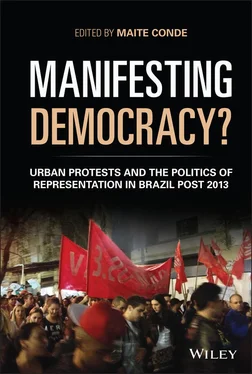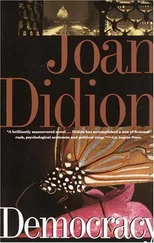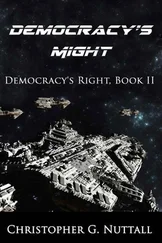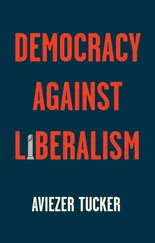Manifesting Democracy?
Здесь есть возможность читать онлайн «Manifesting Democracy?» — ознакомительный отрывок электронной книги совершенно бесплатно, а после прочтения отрывка купить полную версию. В некоторых случаях можно слушать аудио, скачать через торрент в формате fb2 и присутствует краткое содержание. Жанр: unrecognised, на английском языке. Описание произведения, (предисловие) а так же отзывы посетителей доступны на портале библиотеки ЛибКат.
- Название:Manifesting Democracy?
- Автор:
- Жанр:
- Год:неизвестен
- ISBN:нет данных
- Рейтинг книги:3 / 5. Голосов: 1
-
Избранное:Добавить в избранное
- Отзывы:
-
Ваша оценка:
- 60
- 1
- 2
- 3
- 4
- 5
Manifesting Democracy?: краткое содержание, описание и аннотация
Предлагаем к чтению аннотацию, описание, краткое содержание или предисловие (зависит от того, что написал сам автор книги «Manifesting Democracy?»). Если вы не нашли необходимую информацию о книге — напишите в комментариях, мы постараемся отыскать её.
—Dr Jeff Garmany, University of Melbourne Manifesting Democracy?
Manifesting Democracy? — читать онлайн ознакомительный отрывок
Ниже представлен текст книги, разбитый по страницам. Система сохранения места последней прочитанной страницы, позволяет с удобством читать онлайн бесплатно книгу «Manifesting Democracy?», без необходимости каждый раз заново искать на чём Вы остановились. Поставьте закладку, и сможете в любой момент перейти на страницу, на которой закончили чтение.
Интервал:
Закладка:
With the country now led by an authoritarian, it certainly seems that the question of democracy in Brazil needs to be reassessed and revived. The chapters in this volume venture back to, and analyse, a moment in the country’s recent history when such revision and reassessment of democracy was indeed taking place and was at the forefront of Brazilian society. That moment began in 2013. On 6 June of that year, nine days before FIFA’s Confederations Cup was due to kick off in Brasilia, the first of a series of public protests – or ‘ manifestações ’ – began in the city of São Paulo. The protests quickly swept across Brazil, and over the next two weeks they expanded to more than 350 cities and towns, bringing millions into the streets. São Paulo became the scene of some of the largest manifestações , with upwards of 65 000 people taking to the city’s streets on 17 June (Figure 1.1). Initially organized by São Paulo’s Movimento Passe Livre (MPL), the Free Fare Movement, the manifestações began as opposition to a 20-cent increase in public transportation costs. Thousands took to the streets demanding zero fare transport. This occurred at a time when conspicuous spending on upcoming mega events was taking place: the 2013 FIFA Confederations Cup, the 2014 FIFA World Cup, and the 2016 Olympic Games. As Carlos Vainer (2013) notes, these mega events were key to the protests; they catalysed them and provided a global stage for the manifestações . Propelled by this initial movement, protestors’ demands soon became more diverse, encompassing a variety of issues – urban displacement, restricted forms of urban mobility, neglect of public-service investment, corruption – that for many were tied to the country’s relationship with FIFA and ensuing mega-events. As they grew, the manifestações also began to include a broad demographic range, as well as a wide spectrum of ideologies, from both the left and right. The manifestações have remained a feature of Brazil’s urban political landscape, and significantly throughout 2015 they emerged as a key tactic for a dissatisfied upper middle class and a so-called ‘new right.’
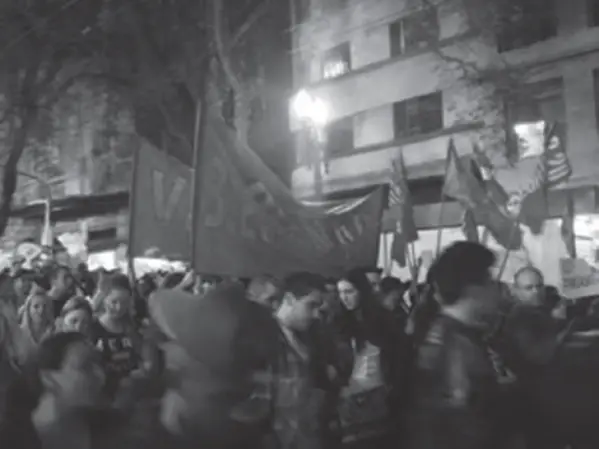
Figure 1.1 Protests in Brazil, 2013.
The unprecedented magnitude of the 2013 manifestações and the wave of urban protests they sparked led many in Brazil to dub them – half jokingly, half seriously – as Brazil’s jornadas de junho or June Days, referring to the 1848 French workers’ uprisings against Napoleon and his reforms. Karl Marx, described the original 1848 June Days as ‘the most colossal event in the history of civil wars,’ arguing in The Eighteenth Brumaire of Louis Bonaparte that though the proletariat’s uprising was crushed by General Cavaignac, at least it was ‘defeated with the honours of attaching to a great world historical struggle’ (2008, p. 23). ‘Not just France,’ he wrote, ‘but the whole of Europe trembled in the face of the June earthquake’ (2008, p. 7). Brazil’s June days also produced a tremor, but not what could be called an earthquake. Class and property were not at the heart of demonstrations and the framework of the country’s socioeconomic order was not called into question. Politics was also only targeted in a diffuse way and produced little change. Yet the protests acquired such magnitude that it was clear that something had happened, and was happening, deep inside Brazil.
Exactly what was happening was unclear. The 2013 manifestações were new, dynamic, and difficult to grasp. The protests perplexed politicians, analysts, and critics alike, many of whom found themselves without solid references to interpret their novelty, and oscillated either between silence or old discourses. As Emir Sader (2013) put it at the time, any attempt to explain them would have been tantamount to a form of reductionism. In fact, the difficulty to easily ‘deal with’ the manifestações was part of their political and cultural vigour, and their significance. What was clear, though, was that the protests raised important issues regarding the politics of urban space and political agency, and foregrounded the uneven neoliberal developmental politics of Brazil’s new identity as an ‘emerging economy.’ They also indicated shifts in Brazilian society, particularly in terms of political mediation and representation, urban subjectivities, mobilities, and political enactment, although as the 2015 protests and Brazil’s current political landscape foreground, these shifts were problematically limited or were capitalized on by an authoritarian thinking. The struggle to interpret the 2013 protests, then, was not just an epistemological struggle, the struggle for theorists and analysts to pinpoint the true content of the manifestações . It was also about a struggle within Brazilian politics and society itself, with the country’s June Days the result of wider political processes. Focusing on different aspects of the 2013 protests, such as urban planning, public transport and mobility, and social media and journalism, the chapters collected here seek to understand, from a variegated lens, this ongoing struggle with in Brazil, a struggle that, as country’s contemporary politics highlights, continues today.
It is, however, important to stress that while the protests that erupted in 2013 were new and unprecedented in their dynamism, the urban centre where they began, São Paulo, was and is by no means a stranger to protest (see Chapter 3). The manifestação is an integral component of the city. In the three months leading up to the June protests, for example, the Movimento sem teto (Homeless movement), and the Sindicato dos trabalhadores das universidades federais no estado de São Paulo (Union of Federal University Workers in the State of São Paulo) led marches through the city, voicing demands and highlighting deficiencies in state provision. And, popular manifestations in São Paulo take the form not just of direct protest. The city’s streets are the stage for varied forms of popular participation. The metropolis is home to politically inflected graffiti and tagging – pixações (Figure 1.2). It is also striated by skateboarding and parkour, rap and breakdancing. Since the 1990s, these practices have embedded themselves in the urban landscape, marking it, re-signifying it, and taking it over. Such urban mobilizations, and the subtle forms of political expression in Brazil they signal, challenge long-held stereotypical views of the population’s passivity and the country’s spirit of ‘cordiality’ that position conflicts in public space as anathema to national identity.

Figure 1.2 Political graffiti in São Paulo, 2013.
All of this is relatively normal in the only country in the world that, since 2001, has constitutionally guaranteed the right to the city. 5 A term first coined by Henri Lefebvre (1996, pp. 63–184), the right to the city is an abstract formulation denoting an imperative for the city’s marginalized to become part of its production, and for urban development to meet basic social needs before serving in the interest of capital accumulation. In Brazil, however, this urban theoretical abstraction has been putatively grounded by an alliance of social movements, squatters, NGOs, and academics that ensured it was enshrined in the 2001 City Statute of Brazil’s constitution – a statute emphasizing democratic urban management, the city’s ‘social’ function as a priority for urban development, and the well-being of urban inhabitants. As utopian as this sounds, this constitutional protection of the right to the city emerged from the strange collision of neoliberalism and democratization that has been key to Brazilian developmentalism since the 1990s (Harvey 2012, p. xiv).
Читать дальшеИнтервал:
Закладка:
Похожие книги на «Manifesting Democracy?»
Представляем Вашему вниманию похожие книги на «Manifesting Democracy?» списком для выбора. Мы отобрали схожую по названию и смыслу литературу в надежде предоставить читателям больше вариантов отыскать новые, интересные, ещё непрочитанные произведения.
Обсуждение, отзывы о книге «Manifesting Democracy?» и просто собственные мнения читателей. Оставьте ваши комментарии, напишите, что Вы думаете о произведении, его смысле или главных героях. Укажите что конкретно понравилось, а что нет, и почему Вы так считаете.
